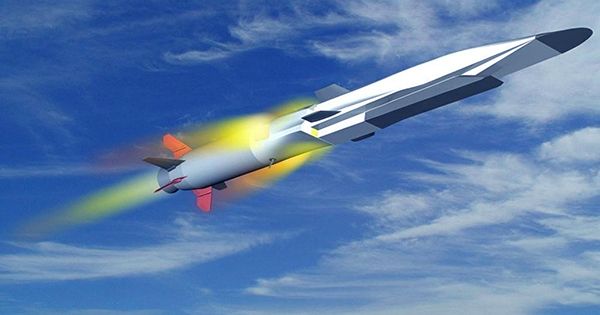China said to have launched two rockets this summer, leaving American military and intelligence officials “stunned.” What kind of launch would astonish and alarm the United States? There have been reports of a hypersonic missile test. Anonymous individuals familiar with US intelligence assessments told the Financial Times that the Chinese military launched a “Fractional Orbital Bombardment System” utilizing a “hypersonic glide vehicle” around the Earth for the first time on July 27, before missing a target by roughly 40 kilometers (24 miles). On August 13, another comparable test was conducted.
Both of these tests perplexed the United States, which lacks the capability to fight against hypersonic missiles now, with one insider telling the publication, “We have no idea how they managed this.” It looked to “defy the laws of physics,” according to another. The rumor of a weapons test denied by Beijing as “Western propaganda,” insisting that it was merely a “regular experiment to test reusable spacecraft,” not a missile. Whatever the exact nature of this summer test flight, expect to hear a lot more about hypersonic weapons in the not-too-distant future.
HYPERSONIC MISSILES: WHAT ARE THEY?
Hypersonic weapons are, in general, significantly faster and more agile than conventional missiles. They are missiles that are propelled into Earth’s upper atmosphere by a rocket at speeds of Mach 5 or higher, or at least five times the speed of sound, or 6,174 kilometers (3,836 miles) per hour, before navigating towards a target. That is quick, but speed is not what distinguishes this new generation of hypersonic weapons; a few countries already have intercontinental ballistic missiles that travel large distances at far greater speeds. However, these ballistic missiles, which follow an arching trajectory that cannot alter after launch, similar to a dart. As a result, they are incredibly predictable and easy to catch.
Hypersonic weapons, on the other hand, can travel at these incredible speeds while also re-orienting and guiding themselves as they approach their target, much like a cruise missile. A “hypersonic glide vehicle” is a hypersonic plane with a warhead that flies through the upper atmosphere and maybe guided and maneuvered towards a target. This has a number of obvious advantages: the missile can approach from any direction, and there is currently no effective way to intercept it. “Hypersonic weapons mean the invalidation of the US anti-missile network,” the Chinese state-owned publication Global Times writes. They might theoretically outfit with a nuclear warhead, posing an even greater threat.
WHO HAS HYPERSONIC WEAPONS IN THEIR ARMY?
China has received a lot of attention recently for developing hypersonic missile technology, but they are not the only military power doing so. Since at least the early 2000s, the United States has been developing such technologies. The US, Russia, and China, according to a recent analysis by the US Independent Congressional Research Service, have the most advanced hypersonic weapons projects, yet the Financial Times piece claims that China has now taken the lead.
Other countries, such as Australia, India, France, Germany, and Japan, are working on hypersonic weapons technology as well. Last month, North Korea purportedly test-fired a newly design hypersonic missile.
President Joe Biden expressed alarm about recent media reports concerning China’s hypersonic weapon test but said little else. However, the United States has been busy testing its own hypersonic weapons. The US Navy and Army conducted a series of tests on component prototypes that would be used to construct offensive long-range hypersonic weapons just days after news of China’s tests leaked. Russia has recently upped the ante as well. Russia declared in 2019 that their Avangard hypersonic glide vehicle program has entered service. It demonstrated its might by shooting a hypersonic cruise missile from a nuclear submarine for the first time earlier this month.
While hypersonic weapons have been around for a while, the current generation of hypersonic glide vehicles is poised to become the most important next generation of advanced weapons, prompting some to term the recent rush to develop this technology an “arms race.” Some analysts have disputed this spectacular assertion, but many have recognized that, in light of this news, the US will have to push forward with missile defense and possibly rethink its nuclear policies.













